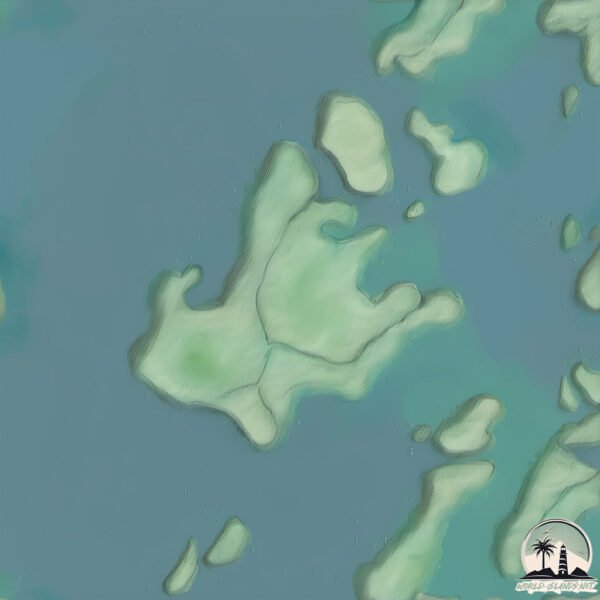Seven Hundred Acre

Welcome to Seven Hundred Acre, a Continental island in the North Atlantic Ocean, part of the majestic Atlantic Ocean. This guide offers a comprehensive overview of what makes Seven Hundred Acre unique – from its geography and climate to its population, infrastructure, and beyond. Dive into the details:
- Geography and Size: Explore the island’s size and location.
- Climate and Weather: Weather patterns and temperature.
- Topography and Nature: Uncover the natural wonders of the island.
- Infrastructure and Travelling: Insights on reaching, staying, and making the most of your visit.
- News and Headlines: Latest News.
Geography and size of Seven Hundred Acre
Size: 3.514 km²
Coastline: 13.8 km
Ocean: Atlantic Ocean
Sea: North Atlantic Ocean
Continent: North America
Seven Hundred Acre is a Small Island spanning 3.5 km² with a coastline of 13.8 km.
Archipel: –
Tectonic Plate: North America – Covers North America and parts of the Atlantic and Arctic Oceans, characterized by diverse geological features and varying levels of seismic activity.
The geographic heart of the island is pinpointed at these coordinates:
Latitude: 44.25653922 / Longitude: -68.95278744
Climate and weather of Seven Hundred Acre
Climate Zone: Continental
Climate Details: Warm-Summer Humid Continental Climate
Temperature: Warm Summer
Climate Characteristics: Features warm summers and cold winters with consistent precipitation, common in higher latitudes.
Topography and nature of Seven Hundred Acre
Timezone: UTC-05:00
Timezone places: America/New_York
Max. Elevation: 21 m
Mean Elevation: 11 m
Vegetation: Mixed Forest
Tree Coverage: 100%
The mean elevation is 11 m. The highest elevation on the island reaches approximately 21 meters above sea level. The island is characterized by Plains: Flat, low-lying lands characterized by a maximum elevation of up to 200 meters. On islands, plains are typically coastal lowlands or central flat areas.
Dominating Vegetation: Mixed Forest
A combination of both deciduous and evergreen trees, often found in transitional zones between forest types. These forests offer a diverse habitat for various wildlife species. Seven Hundred Acre has a tree cover of 100 %.
Vegetation: 3 vegetation zones – Moderately Diverse Island
These islands start to show a broader range of ecological niches. With three vegetation zones, they may offer a mix of ecosystems like coastal areas, inland woods, and perhaps a distinct wetland or dry area. This diversity supports a wider range of flora and fauna, making these islands more ecologically complex than those with minimal diversity.
Infrastructure and Travelling to Seven Hundred Acre
Does the island have a public airport? no.
There is no public and scheduled airport on Seven Hundred Acre. The nearest airport is Bangor International Airport, located 61 km away.
Does the island have a major port? no.
There are no major ports on Seven Hundred Acre. The closest major port is CAMDEN, approximately 12 km away.
The mean population of Seven Hundred Acre is 1 per km². Seven Hundred Acre is Uninhabited. The island belongs to United States of America.
Continuing your journey, Islesboro is the next notable island, situated merely km away.
Most Expensive Private Islands Owned By Billionaires



United States of America is classified as Developed region: G7: Group of Seven – Major advanced economies, including Canada, France, Germany, Italy, Japan, the United Kingdom, and the United States. The level of income is High income: OECD.
News – Latest Updates and Headlines from Seven Hundred Acre
Stay informed with the most recent news and important headlines from Seven Hundred Acre. Here’s a roundup of the latest developments.
Please note: The data used here has been primarily extracted from satellite readings. Deviations from exact values may occur, particularly regarding the height of elevations and population density. Land area and coastline measurements refer to average values at mean high tide.
